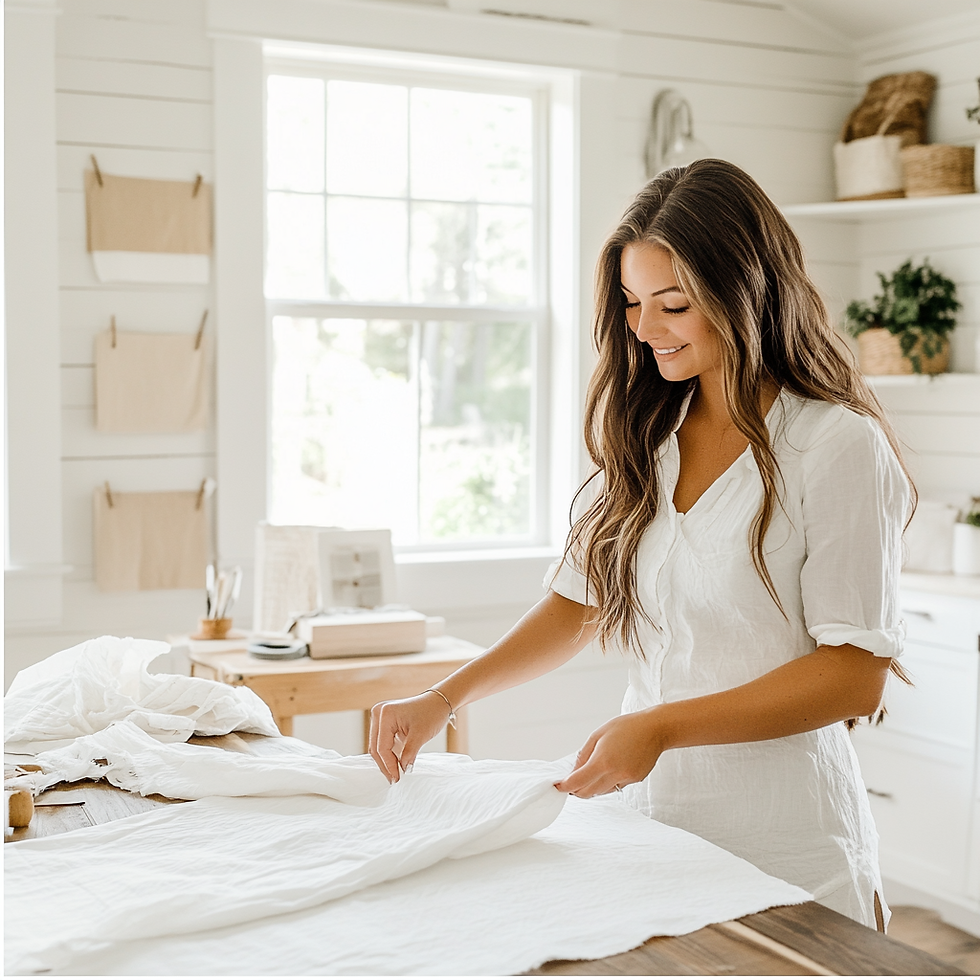How eBay’s Circular Fashion Fund Inspires Sustainable Practices for Handmade Sellers
- Cheri Tracy
- Oct 25, 2024
- 3 min read
Embrace the Circular Economy and Build a Brand That Cares for the Planet
eBay recently announced its $1.2 million investment in the Circular Fashion Fund to promote sustainable and eco-friendly practices within the fashion industry. This fund encourages brands to adopt circular economy principles—creating products that minimize waste, use recycled materials, and reduce environmental impact. While this initiative focuses on the fashion industry, it’s a powerful reminder for handmade sellers across all categories to explore sustainable practices and build brands that prioritize the planet.
For handmade sellers, the shift towards sustainability isn’t just a trend; it’s a meaningful way to differentiate your brand and attract eco-conscious customers.
Here’s how you can draw inspiration from eBay’s Circular Fashion Fund to incorporate sustainability into your handmade business.
1. Embrace the Circular Economy with Recycled or Reused Materials
One of the core principles of the circular economy is reducing waste by reusing materials whenever possible. As a handmade seller, you have the flexibility to integrate recycled or upcycled materials into your products. Whether you’re making jewelry, home decor, or apparel, sourcing materials that are either recycled or sustainably produced can reduce your environmental footprint and add unique value to your products.
Example: If you create jewelry, consider using recycled metals or beads from vintage pieces. Not only does this give new life to old materials, but it also tells a story that resonates with customers who value eco-friendly practices.
2. Offer Product Repair or Recycling Programs
Another way to support circularity is by offering repair or recycling programs for your products. For handmade items that are crafted to last, you can provide a repair service for customers who want to refresh or fix their items. This helps reduce waste by extending the product’s life cycle, showing customers that you stand behind the quality of your work.
Action Tip: Offer a small discount for customers who return products for recycling or repairs. This not only encourages eco-friendly behavior but also builds customer loyalty by showing your commitment to sustainable practices.
3. Educate Customers on Sustainable Choices
Many consumers want to make eco-friendly choices but may not know the impact of different purchasing decisions. eBay’s initiative highlights the importance of educating consumers on sustainability. As a handmade seller, you can use your platform to share insights about your materials, process, and the benefits of choosing sustainably made products.
Example: Add a “Sustainability” section to your website or product pages, explaining where your materials come from and why sustainability matters. Social media is another great channel to share tips, facts, and behind-the-scenes content about your eco-friendly practices.
4. Use Eco-Friendly Packaging
One of the simplest ways to incorporate sustainability is through eco-friendly packaging. Opt for recyclable or biodegradable materials, and minimize excess packaging. This small change not only reduces waste but also makes a lasting impression on eco-conscious buyers.
Action Tip: Use recycled kraft paper, biodegradable mailers, or compostable bags to package your products. Consider adding a note with your orders encouraging customers to reuse or recycle the packaging.

5. Consider Limited-Run, Small-Batch Production
Producing limited runs or small batches of products aligns with circular economy principles by reducing the risk of overproduction and waste. Handmade sellers often already operate with small-batch production, which naturally limits waste and ensures a more personalized, crafted approach. Emphasizing this can attract customers who are seeking unique, low-waste purchases.
Example: Highlight that your products are made in small batches to reduce waste and focus on quality. Limited-edition releases can also create exclusivity and urgency while maintaining sustainable practices.
6. Partner with Other Eco-Friendly Brands or Local Artisans
eBay’s fund encourages partnerships within the fashion industry, and this principle applies just as well to handmade sellers. Collaborating with eco-friendly brands or local artisans can expand your reach, promote sustainable values, and support your community. Partnering with others in the eco-conscious space helps amplify the impact of sustainable practices.
Example: If you’re a candle maker, consider collaborating with a local potter for reusable ceramic candle holders. Customers get a beautiful, sustainable product, and you support a fellow artisan.
Final Thoughts
eBay’s Circular Fashion Fund underscores a growing movement towards sustainable business practices—a trend that handmade sellers are uniquely positioned to embrace. With thoughtful choices in materials, production, packaging, and partnerships, you can build a brand that not only creates beautiful products but also makes a positive impact on the environment.
Ready to build a more sustainable handmade business? Start with small steps like eco-friendly packaging or upcycled materials, and share your journey with your customers. The shift towards sustainability isn’t just good for the planet; it’s good for business, too, attracting customers who value eco-friendly and ethical products.









Comments